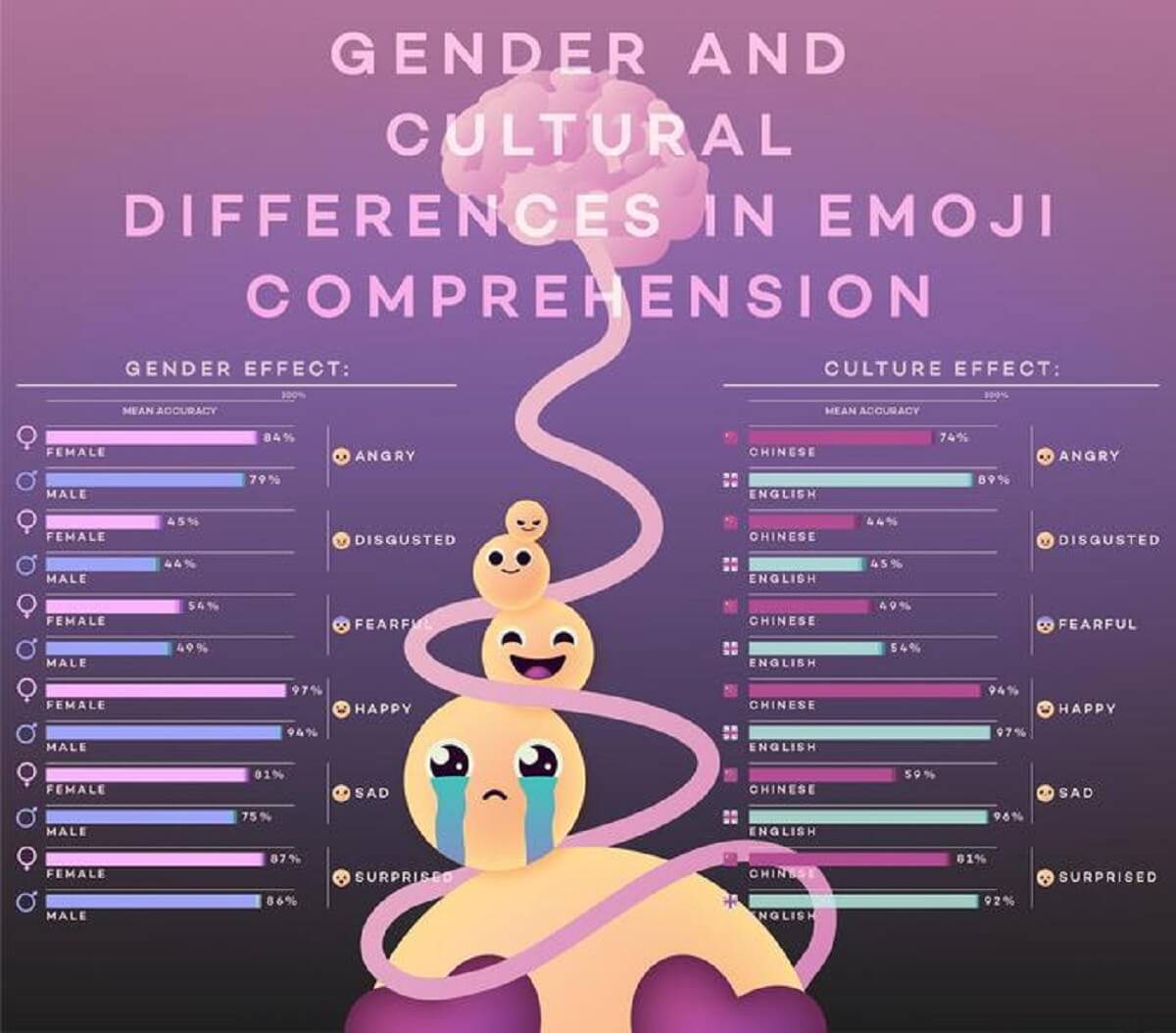nOttingham, United Kingdom — New research reveals that our interpretation of emojis varies greatly based on our gender, age, and cultural background. A collaborative effort between British and Chinese scientists reveals how different demographics view emojis around the world. Their study revealed that even our geographic location plays a crucial role in our understanding of certain emojis.
The results suggest that older individuals are less likely to correctly interpret the intended meanings of some emojis, while women are more likely than men to agree with the intended interpretations of others. The study assessed participants' responses to emojis representing happiness, disgust, fear, sadness, surprise, and anger. Emojis, which are simplified representations of facial expressions that convey different emotions, add emotional depth and potential ambiguity to digital messages.
However, these interpretations are not universal, leading to potential misunderstandings in electronic communications.

A research team from the University of Nottingham recruited 523 adults from China and the UK. Just over half of the participants (51%) were women (49% male), and their ages ranged from 18 to 84 years. The study focused on six basic emojis from Apple, Windows, Android, and WeChat platforms to assess how accurately participants matched them. These emojis with their intended emotional labels.
The results show a decrease in matching accuracy with age, especially for emojis depicting surprise, fear, sadness, and anger. Female participants were more likely than males to correctly interpret emojis conveying happiness, fear, sadness, and anger. In addition, UK participants generally outperformed their Chinese counterparts in matching emojis to their assigned labels, with the exception of the disgust emoji.
The researchers acknowledge the limitations, noting that the study's focus on just six types of emoji may not fully represent real-world usage. For example, the emoji chosen to denote disgust is sometimes confused with a “confused face,” illustrating the challenges in globally classifying emotions in emojis.
The study underscores the critical role of context in interpreting emojis, highlighting that emojis may not always convey the intended emotion across different cultures or demographics. It is suggested that future research should explore a broader range of emojis and take into account individual differences in interpretation within and outside specific contexts.
“Emojis are an important alternative to non-verbal cues such as facial expressions in written online communications. Until now, little is known about individual differences in how they are perceived,” says Dr. Hannah Homan, lead author of the study from the University of Nottingham, in a media release. “.
“The results of our study indicate that all of the factors under investigation – gender, age, and culture – had a significant impact on how emojis were rated. The current findings have important implications when considering the use of emojis in online communication, for example, with cross-cultural conversation partners.” Different or of different ages.
The results are published in the journal One plus.
You may also be interested in:
SWNS writer James Gamble contributed to this report.

